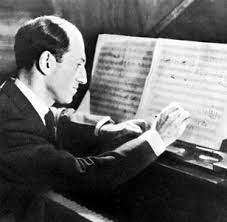Playing without the dots
Why you should memorise tunes
Sheet music is just information, it’s not the music itself. The more you read what’s in front of you the less head room you’ll have for creativity. Playing without the dots opens up your ears!
Which tunes should I learn?
This, of course, is very much up to you. But I’ve chosen the following 12 songs for the following reasons:
- They are easy to learn.
- They are popular and likely to come up when playing with other musicians.
- Your list should contain well known standards, at least one in 3/4, a blues, a ballad, a Latin tune in straight time and a song form that follows the Rhythm Changes structure.
12 songs to learn playing without the dots
1) Autumn Leaves
This is the first standard I give to my students due to its simple construction.
Usual key: Bb major
Form: AB = 16 bars
Map: Very easy to learn as it just flips between II-V-I major and II-V-I relative minor.
2) C Jam Blues
A very simple blues.
Usual key: the clue’s in the title.
Form: 12 bars
Map: Can either be played with the 3 basic chords or with an added II-V at bars 9 and 10.
3) I Got Rhythm
This chord sequence is known as Rhythm Changes and is based on this song by
George Gershwin.

Usual key: Bb.
Form: AABA = 32 bars.
Map: The A section is mostly a I-VI-II-V turnaround but with a move to the subdominant (IV) at bar 6. The B section consists of 4 dominant 7s that follow the circle of 5ths.
4) Blue Bossa
This simple sequence has a Latin feel.
Usual key: C minor
Form: 16 bars repeated.
Map: Only 2 keys to learn: it’s mostly in C minor but bars 9-12 flip to Db major.
5) All Of Me
A very well known standard, often sung.
Usual key: C major
Form: AB = 16+16
Map: Remains in original key with a foray into the relative minor.
6) Bye Bye Blackbird
A traditional ‘singalong’ but listen to the Keith Jarrett version for inspiration.
Usual key: F major
Form: AB = 16+16
Map: A section remains in the original key. B section contains some II-V’s.
7) Fly Me To The Moon
Often sung, popularised by Sinatra
Usual key: C major
Form: AB = 16+16
Map: III-VI-II-V-I-IV as in ‘All The Things You Are’ but then moves to the relative minor.
8) Satin Doll
An Ellington standard. Ramsey Lewis recorded a very accessible version.
Usual key: C major
Form: AABA = 32 bars.
Map: kicks off with a pair of ascending II-V’s. B section moves to F major.
9) What Is This Thing Called Love
Another popular standard with a conventional AABA structure.
Usual key: C major.
Form: AABA = 32 bars.
Map: Unusual in that the A section starts with a minor II-V-I in F minor.
As usual, the B section moves to a new key, this time Bb major.
10) Yesterdays
A Jerome Kern ballad in a minor key that contains a circle of 5ths
Usual key: D minor.
Form: AB = 16+16
Map: After staying in D minor for a while it moves though the circle of 5ths from bar 9 – 12 before returning to the key signature.
11) Beautiful Love
Another tune in a minor key with an AB structure.
Usual key: D minor.
Form: AB = 16+16
Map: Sets out with a II-V-I in D minor then switches to its relative major.
12) Some Day My Prince Will Come
Here’s your opportunity to play in 3 time. This tune is a Bill Evans special.
Usual key: Bb major.
Form: AB = 16+16
Map: Stays in the same key but throws in some diminished chords.
So playing without the dots will raise your level of creativity.